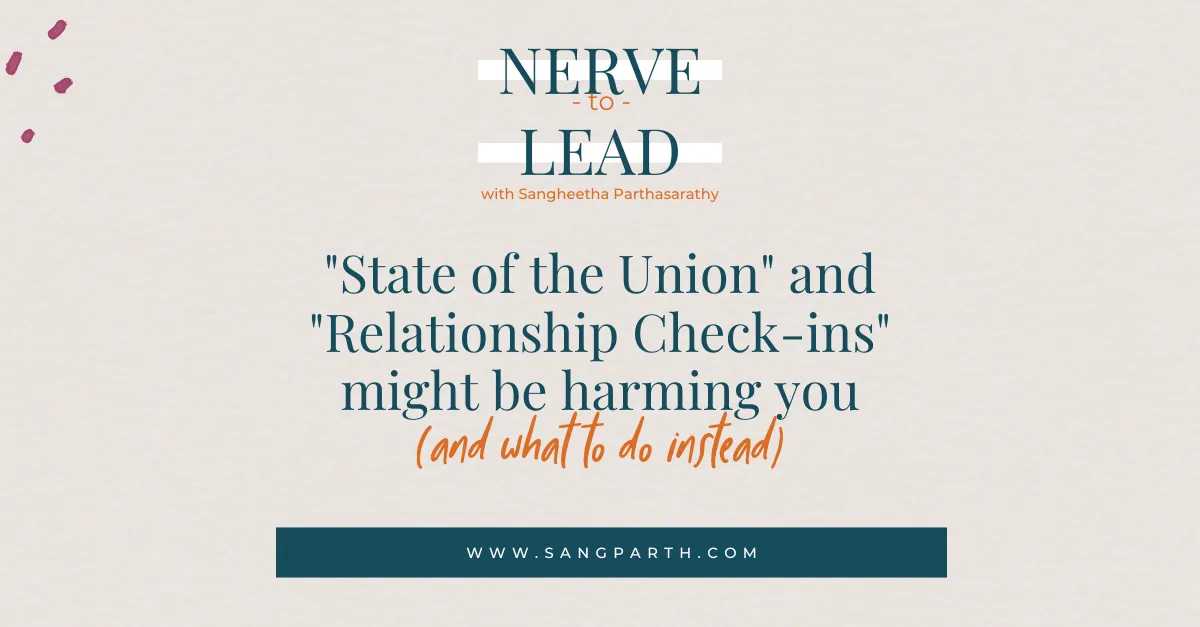
Relationship Check-ins can accidentally harm your relationship - and what to do instead
A bi-weekly relationship check-in can be like taking the temperature of a marriage/partnership, but it's not always the right prescription.
This approach assumes that both partners are equally equipped to use language and communicate effectively at all times. However, in relationships, there are two attachment systems at play, and the majority of our feelings of safety in connection occur non-verbally and hence very quickly.
Answering questions about the state of a relationship can cause embarrassment, anger, or shut down, making it difficult to stay connected when one or both partners feel threatened.
Speaking requires multiple parts of the brain, including Broca's and Wernicke's areas, which are responsible for language production and comprehension, respectively. Typing, on the other hand, involves the visual cortex and motor cortex, which control finger movement and processing of visual information.
In other words, speaking requires the orchestration of multiple brain regions, like a conductor leading a symphony, while typing is more like a solo piano performance with the visual and motor cortexes taking center stage.
During the fight/flight/freeze response, the body's sympathetic nervous system is activated, which can lead to difficulty speaking or finding the right words to express oneself. Chronic stress can also lead to changes in the amygdala, affecting Broca's area. Motor cortex stimulation through typing, on the other hand, or even walking to a different room, can regulate the activity of the amygdala and other brain regions involved in emotional processing and regulation.
Typing or texting can thus be an effective way to communicate during some parts of high-stakes conversations, as it allows us to express ourselves without getting derailed by blame-shame cycles.
In other words, During high-stakes conversations, the body's fight/flight/freeze response can be like a trapdoor that suddenly opens, making it challenging to find the right words to express oneself. Typing or texting can be like a secret passageway that allows us to bypass the trapdoor and communicate more effectively.
However, our nervous system can get in the way of remembering to do this when we're in the middle of a difficult conversation especially when our safety detector, the amygdala, is stuck in hypervigilance mode, our body is acting in the "Me vs You" mode.
Couples therapy can be like a map that helps us navigate the terrain of our relationship, but it can't always uncover the hidden patterns that determine the health of our connection. By becoming more conscious of these unconscious processes, we can rewire our nervous system and create a stronger psychological safety net.
Ultimately, whether it's a co-founder, mentor, ally, or teammate, all relationships can benefit from a deeper understanding of these neuroscientific principles. It's like shining a light on the hidden corners of our minds and illuminating the path toward greater ease, peace, pleasure, and power.
Next time you find yourself in a high-stakes conversation - open up possibilities and options in communication that prioritizes nervous system-to-nervous system safety first, this is one way to be inclusive too.
If you're interested in exploring these patterns and rewiring your nervous system, I offer a free 15-minute, no-obligation experiential session to help high-achievers experience ease, peace, pleasure, and power. Book your session at https://www.sangparth.com/relationships.
